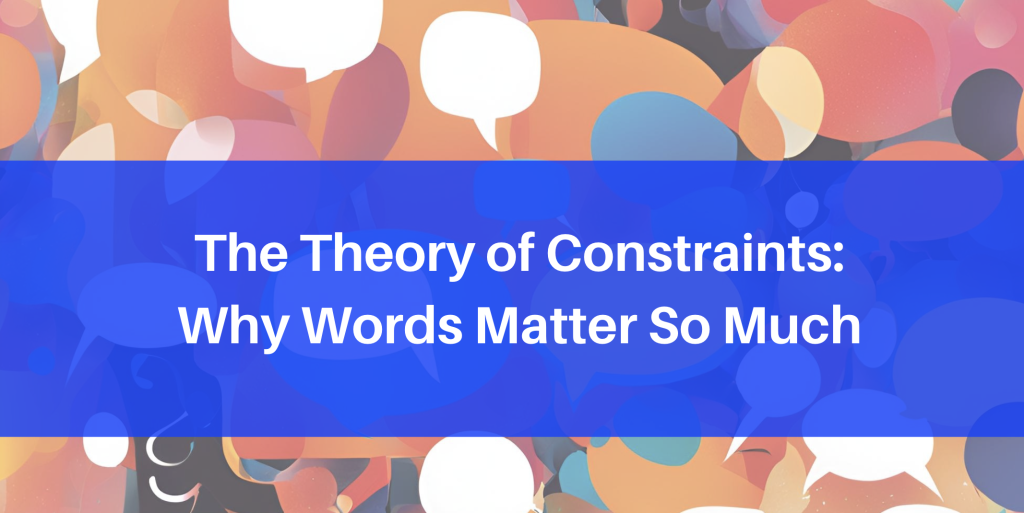
This post about the Theory of Constraints is by Dr. Giovanni Siepe who was educated as a physicist.
The Theory of Constraints can be defined in several ways. We might call it a Theory of Flow, or a Finite Resource Management Theory, or a Synchronization Theory.
These definitions are all correct. However, if we want to give an all-encompassing definition, probably the most complete one would surprise many people and that would be the Theory of Constraints is a Theory of the Use of Language. Dr. Goldratt’s great revolution is precisely this: his introduction and development of the “Thinking Processes” that require us to capture and develop our thinking through words, through language.
It’s not about asking people in our company to write and speak like Shakespeare or Dante: the key point is to learn how to reframe and direct our thoughts (often an emotional and unverbalized jumble) through language in order to achieve the results we are seeking, whether this be to solve a conflict, resolve a problem, design a strategy or develop a breakthrough innovation.
Making sense from messy thoughts
How do the Thinking Processes help us to do so many different things at so many different levels, starting from our messy thoughts? By guiding us to distinguish different categories of speech: goals, needs, what we want, what we don’t want, our assumptions and mental models, and the solutions we imagine. All of this must be contextualized because the same categories of speech have different implications in different contexts. For example, think of the statement “The Earth is flat.” This statement (assumption) was proven false (invalidated) by Eratosthenes more than 2000 years ago. However, if we contextualize this statement, we realize that the reality that we experience every day leads us to believe with a good degree of approximation that the Earth is flat. The context, the scope of every statement, changes the perception of reality and, therefore, reality itself.
Einstein and a little geometry
Let’s take Albert Einstein. It might seem paradoxical, but in order to conceive and develop his Theory of General Relativity, Einstein started from the consideration that the geometry of the universe is locally Euclidean, i.e. the universe is locally flat, until he generalized the theory which described the geometry of the universe as a whole as curved (possibly non-Euclidean) spacetime.
Going back to geometry, what is the deeper meaning underlying the concepts of the perimeter and area of a triangle? Let’s consider an equilateral triangle as in the figure below:
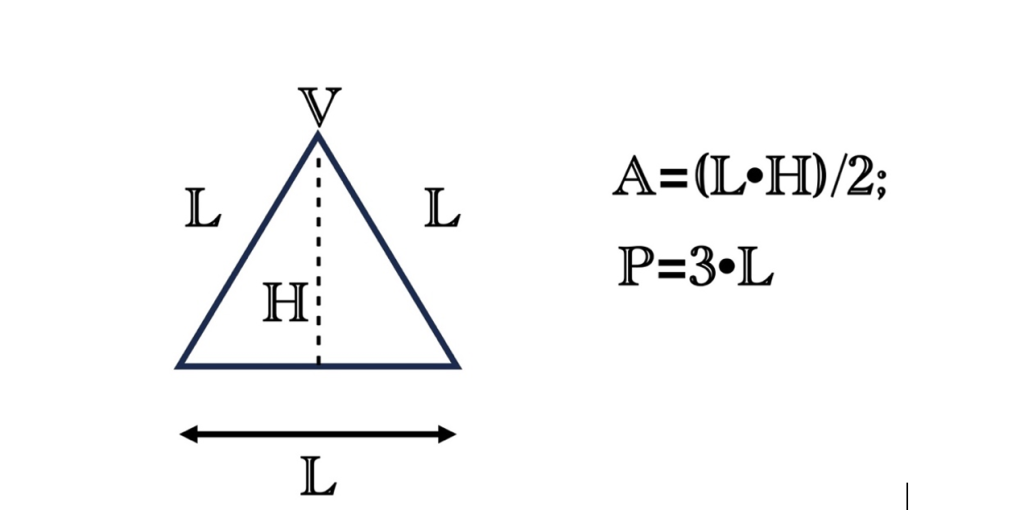
The area and perimeter are well-defined quantities. Suppose we divide two sides of the triangle in half, and rotate the top vertex by 180˚
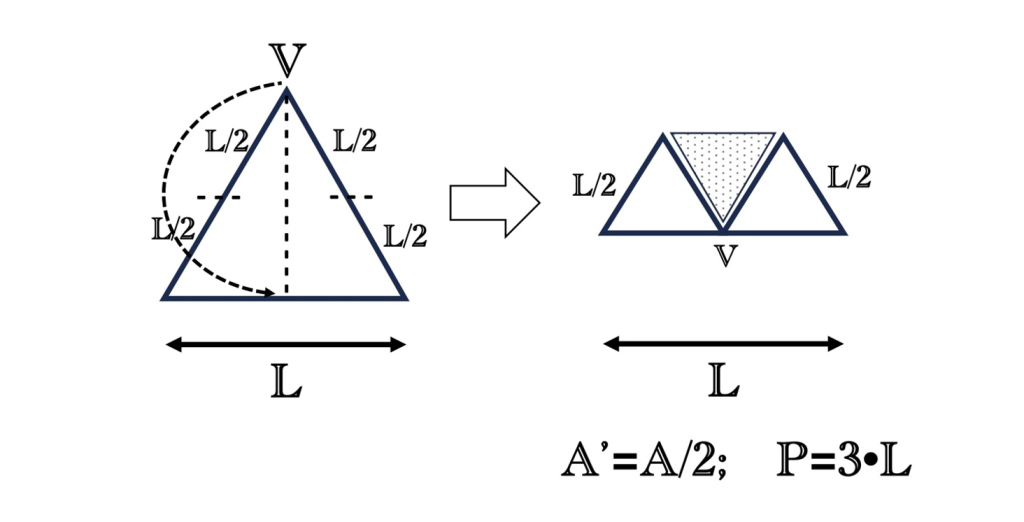
What we get are two triangles whose total perimeter is still the same as the one of the original triangle while the total area has been halved. By repeating the process once more, you obtain four triangles whose total perimeter is still the same as the original one, while the total area has become a quarter of the initial one.
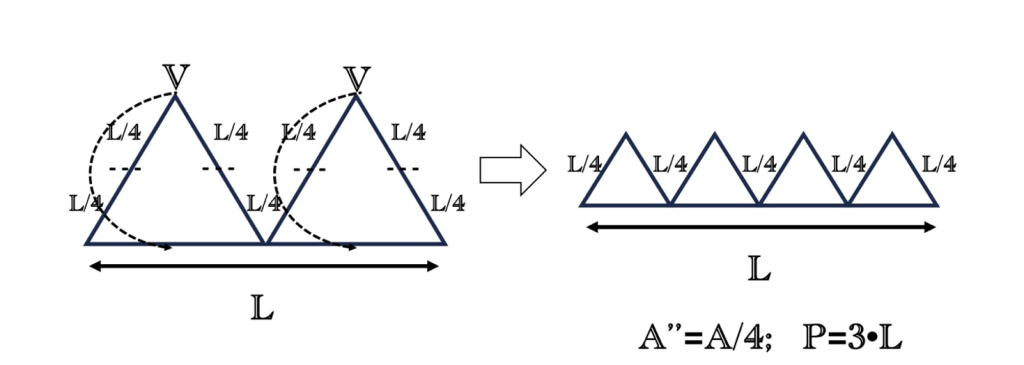
If we keep repeating the same process, we will eventually get to a series of triangles whose total perimeter remains the same as the original one while the total area tends towards zero. We will have arrived at a scale that is equivalent to the subatomic, where the whole drawing of the triangles will be embedded in the thickness of the pen stroke.
What meaning, then, should we give to the words “perimeter” and “area” in this context? The concepts of perimeter and area become intertwined: in this context, therefore, new definitions are required.
This is exactly the point. Concepts, words, and ideas must be contextualized.
Context and language
In his book ‘It’s not Luck’, Goldratt introduces the Conflict Cloud by using a very relatable example: the conflict between a father and his teenage daughter.
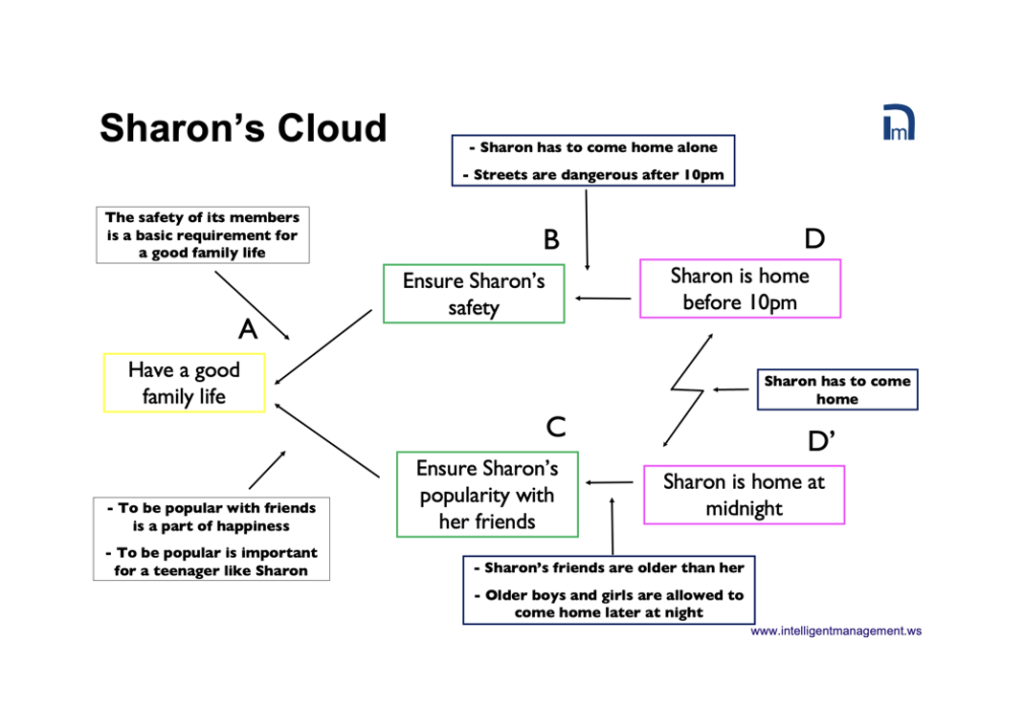
One objection I received while training some managers came from someone who did not recognize the assumption “streets are dangerous after 10 pm” as valid.
Whereas in Tel Aviv (the place where the cloud was conceived) the above assumption could be regarded as valid, the same could not be said for someone living in a different city.
Context, environmental and emotional, is important, as is the correct use of language. As it says in ‘It’s Not Luck’, the Thinking Processes are the hard core of the Theory of Constraints. We can never forget that any technical solution developed by Goldratt to manage production, projects, sales, supply chain etc. stems from the invalidation of limiting assumptions. This was all achieved through words, through language.
To find out more about ten guided steps to a systemic leap ahead for your company, contact Angela Montgomery at intelligentmanagement@sechel.ws
SCHEDULE AN INTRODUCTORY CALL WITH US

Intelligent Management works with decision makers with the authority and responsibility to make meaningful change to optimize your company for the digital age. We have helped dozens of organizations to adopt a systemic approach to manage complexity and radically improve performance and growth for over 25 years through our Decalogue management methodology. The Network of Projects organization design we developed is supported by our Ess3ntial software for multi-project finite scheduling based on the Critical Chain algorithm.
See our latest books: The Human Constraint from Taylor & Francis; From Silos to Networks: A New Kind of Science for Management from Springer; Moving the Chains: An Operational Solution for Embracing Complexity in the Digital Age by our Founder Dr. Domenico Lepore, and ‘Quality, Involvement, Flow: The Systemic Organization’ from CRC Press, New York by Dr. Domenico Lepore, Dr. Angela Montgomery and Dr. Giovanni Siepe.





Leave a Reply